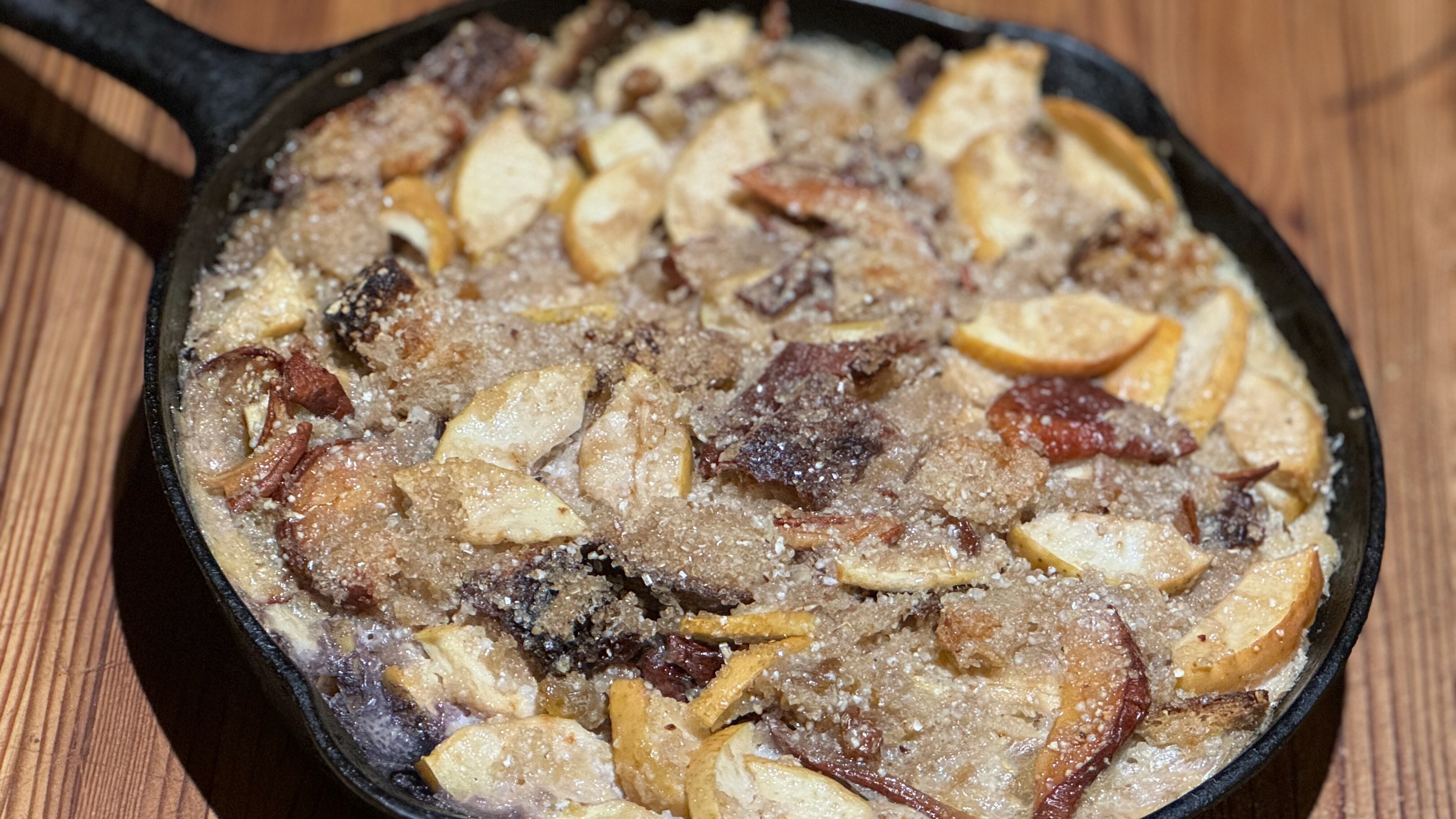Jim Dixon wrote about food for WW for more than 20 years, but these days most of his time is spent at his olive oil-focused specialty food business Wellspent Market. Jim’s always loved to eat, and he encourages his customers to cook by sending them recipes every week through his newsletter. We’re happy to have him back creating some special dishes just for WW readers.
In Venice, they make a dessert like this called pinza, and like most Italian dishes, there are as many recipes as cooks who make it. They all share the use of relatively common ingredients; this is part of the cucina povere, the food of the poor. Stale bread, a few apples, some dried fruit, a handful of polenta, milk, eggs, and chopped nuts become almost luxurious when sweetened with a couple of spoonfuls of precious sugar and a splash of grappa. While bread pudding exists almost everywhere people eat bread, the addition of the ground corn called polenta makes this one different. It adds texture and helps bind the rest of the ingredients together.
Corn came to Italy from America, and I looked for similar bread puddings using cornmeal. While New World cooks made lots of desserts with ground corn, from spoon bread to cornbread pudding, I couldn’t find anything else that mixed leftover wheat bread with ground corn. But this just felt like something you’d find in the South, where impoverished cooks used every last edible morsel. No matter where it was made in the past, this is still a very tasty, not too sweet dessert.
Recipe
- 2 cups stale bread* cut into pieces
- 2 cups milk
- ¾ cup polenta (or any coarsely ground cornmeal, such as grits)
- 3 smallish apples, cored and sliced
- ¼ cup raisins
- 2 cups dried figs (or other dried fruit)
- ¼ chopped walnuts
- 3 tablespoons sugar
- 2 eggs
- ¼ cup grappa (or any other spirit, but avoid those with an added flavor like mint)
- Olive oil or butter to grease skillet
*Leave slices of fresh bread on the counter for a couple of hours to dry them out so they’re sort of stale
Soak the bread in the milk for about 10 minutes, then drain the milk into a small saucepan and add the polenta. Slowly heat to a gentle boil, cook for about 3 minutes, and remove from heat.
Use a large bowl to combine the soaked bread, apples, raisins, figs, walnuts, sugar, eggs and grappa. Add the polenta and milk from the saucepan and mix together.
Grease an 8-inch skillet or similarly sized baking dish with a little olive oil or butter. Add the bread mixture and press into the pan. Sprinkle a little more sugar on the top. Bake at 350 degrees for an hour. You can eat it warm, and it’s pretty good, but I think it’s even better the next day. And better yet with a splash of cream.

